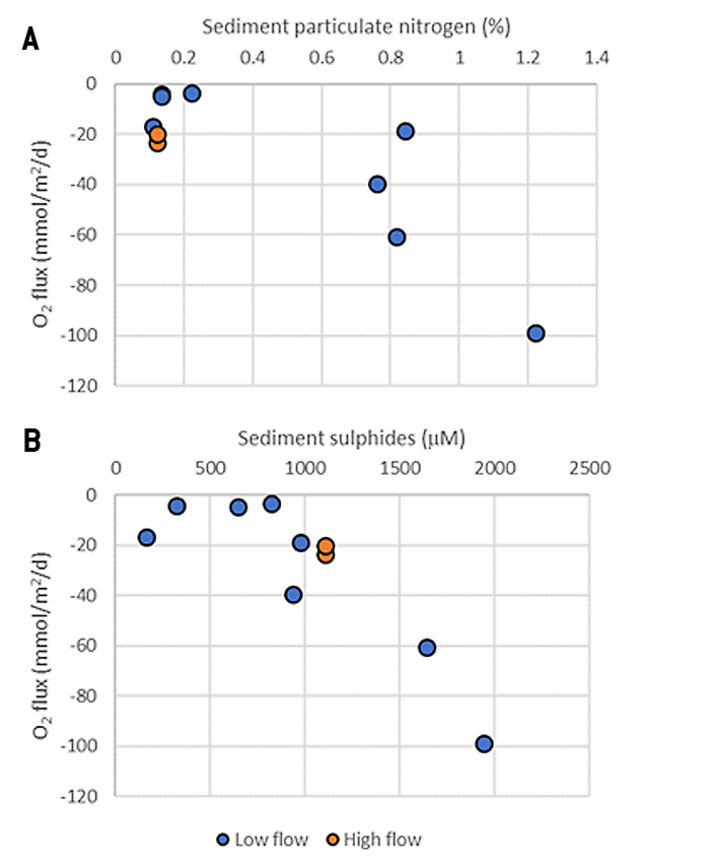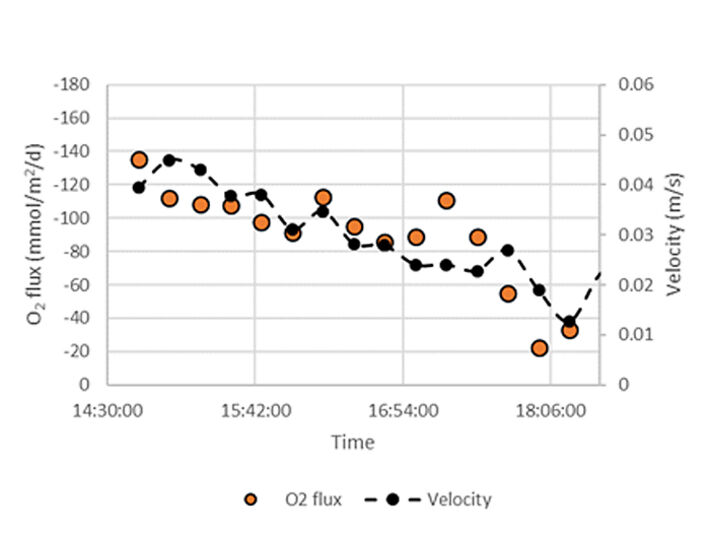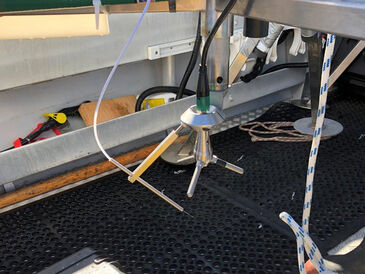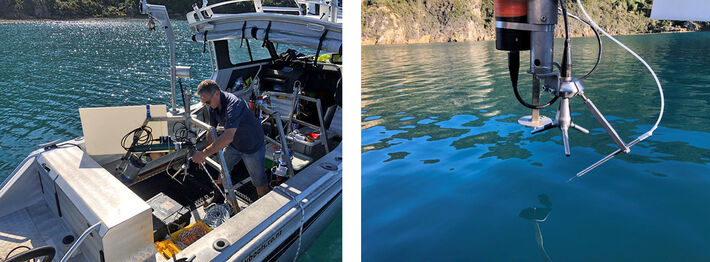Watch tutorials, webinars and informative videos about PreSens optical sensor systems.
David Plew1 and Martin S. Gutbrod2
1National Institute of Water and Atmospheric Research, Christchurch, New Zealand
2PreSens Precision Sensing GmbH, Regensburg, Germany
Deposition of organic material from salmon farms can affect the ecological health of the seabed. If organic material accumulates too rapidly, negative and potentially serious geo-chemical and ecological changes can occur. In many places, the benthic impacts of salmon farming limit how much production can be sustained on the farms. How much organic loading to the sediments can be sustained within acceptable limits is influenced by hydrodynamic conditions - high velocities spread material over a wider area resulting in a less concentrated benthic footprint, can resuspend material, but also more effectively oxygenate the sediments allowing higher loads to be assimilated. We are measuring oxygen fluxes to sediments near salmon farms and relating these fluxes to hydrodynamic conditions and the amount of sediment enrichment. Ultimately, our work will help predict safe farming intensities based on hydrodynamic conditions at new or existing sites.
Our study requires measuring benthic fluxes in situ under ambient conditions. We are measuring fluxes using the eddy covariance method.
Method
In situ oxygen fluxes were obtained from eddy covariance of near bed oxygen concentrations and velocity. A fast response optode set-up (OXY Flux together with micro-optodes ECO-PSt7, PreSens GmbH) was positioned close to the sample volume of an acoustic doppler velocimeter (Nortek Vector), and both systems were placed on a benthic tripod with the sampling volume ~ 15 cm above the sea bed. Output from the optode was recorded on the velocimeter. The tripod was deployed from a small (6 - 7 m) boat to depths of 25 - 30 m. Oxygen fluxes were calculated using the eddy covariance method, and compared with analysis of sediment cores for carbon, nitrogen, phosphorus and free sulfides. Measurements were taken at salmon farms with high (7 - 15 cm/s) and low (1 - 5 cm/s) near bed velocities. Deployments were 24 - 36 h in duration.
Results
Most data collected so far in our study have been obtained at low flow sites, which show greater oxygen fluxes to the seabed (negative fluxes) with increasing indicators of sediment enrichment such as particulate nitrogen and free sulfides (Fig. 2). The benthic oxygen fluxes also show a dependency on water speed, with fluxes decreasing in size as water slows (Fig. 3). Insufficient light reached the seabed to stimulate primary production (positive fluxes) at the study sites.


Conclusion
The preliminary results indicate that indeed both sediment enrichment as well as site flow velocities influence oxygen fluxes into the sediment below salmon farms. In situ benthic oxygen flux measurements correlate with benthic impact and have potential as a monitoring or assessment tool. More data is being collected from high flow sites to better separate these two effects and ultimately derive predictors of appropriate deposition rates that maintain benthic health targets. Fast response optodes are robust and perform well in this application. A particular advantage of the OXY Flux system is the small sensor size, which has minimal impact on flow and appears insensitive to flow direction. This means that lander deployments can be made over multiple tidal cycles without needing to re-orient the instrument array as the direction of currents change.




